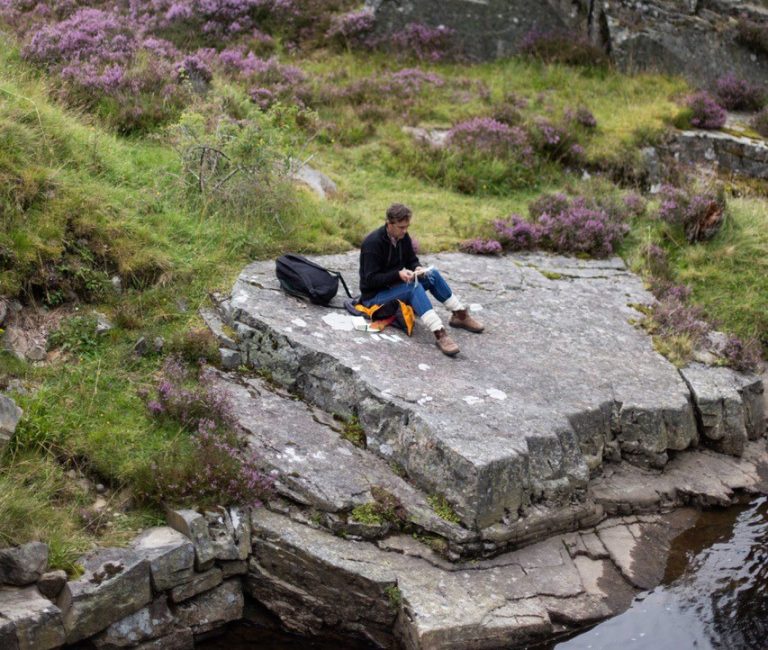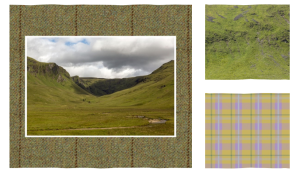Shifting perspectives, Alec Finlay on connecting with the landscape
Alec Finlay, a Scottish creative whose work takes many formats, including poetry, sculpture, and design, focuses his art on our connection with the landscape. While visiting the National Park, he found inspiration to document his experience through the perspective of his own disability.
Living with ME (Myalgic encephalomyelitis) has required me to shift my creative attention from walking in, to viewing landscapes. Long rambles over moors became short walks in richly wooded, naturally diverse patches of land. Focusing my attention on small areas, accessible to people with limited mobility, I began to reflect on disabled perspectives of the landscape. Then I realised these also held value for the non-disabled reader, viewer, or walker. I’m curious to reflect on what it means to value the sense of walking slower and more meaningfully, seeing it as a skill – a different way to experience the landscape.
While taking time to explore my surroundings on a smaller scale, I focused on getting up close with mosses, lichens, and shiny red mushrooms – finding a view where the stump of a pine takes on the scale of a mountain or lifting a hand up to block out an entire hill.
I was inspired, reading about The Monega – a hill near Braemar – to experiment with designing ecological tartans and tweeds in the colours of specific hills, identifying the key species – the background of moor grass, lichen-covered stone, or the dark dubh of heather, and the finer showy details of the sett, like the blues or purples of an alpine wildflower. Colour is where culture and nature meet, and these are layered to reflect on how we interact with nature as humans. I like to imagine being wrapped up in a tartan blanket landscape – a symbol of recuperation and romance.



This focus on micro-ecology helps us to tune in to something beyond ourselves, giving quiet attention to a caterpillar or bud of bog cotton, can encourage those who have illness or anxiety to focus on nature, to soften their awareness of pain.
Bonding with people who share similar experiences has been incredibly beneficial, given disability and pain can be so isolating, and connecting with nature helps people feel less alone. I remember fondly attending a creative pinewood seminar at which we were invited to lie up the slant sides of a hollow, eyes closed, boots almost meeting in the middle – there was something about being in a group that deepened the connection with nature, hearing the soughing of the wind in the branches, and the midges whining. Absorbing the birdsong around us, feeling the microtonal niche of the wood, achieved something that, it seems neither me nor they, can quite explain. In nature, people enter a receptiveness, to be safe, to receive, and to belong.
Spending time in a local park with a friend, particular benches and views became a ‘habitat’ for the moment, in the double sense of time and significance. This is a reminder of the possibilities of creating, curating, and supporting social relationships in nature: even when you can’t walk far, it may be possible to find nooks, shelters, and natural settings, where the foxgloves, or a view of the sea, enhance moments of translation between self and other.
Everyone can learn how to be with or in nature; how to belong. We are not born with that as an innate skill. Taking time to explore your surroundings on a smaller scale might just be the first step, using names and views. By doing so, you can discover the beauty and tranquillity that nature offers, a welcome break from pain and anxiety, fostering a deeper connection with the world around you.
You can read more of Alec’s work at https://www.alecfinlay.com/

This Green Health Week we’re championing the voices and experiences of people in the Cairngorms who demonstrate daily that nature is for everybody. Improving health and wellbeing is a key strand of the #Cairngorms2030 programme, made possible by The National Lottery Heritage Fund, thanks to National Lottery players.

